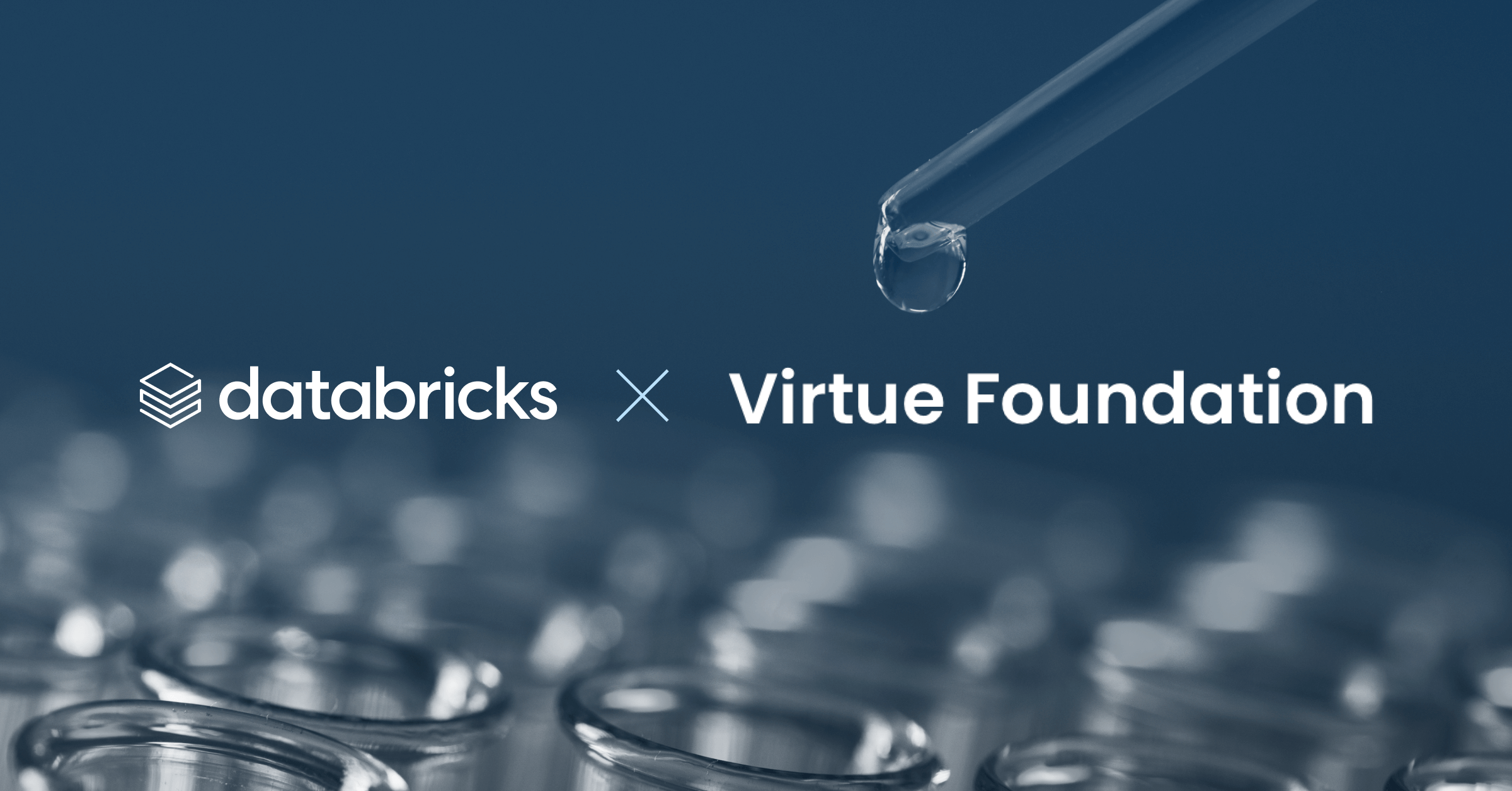Pathnostics社が複雑な診断データ管理にDatabricksデータインテリジェンスプラットフォームを採用した理由
全社的なデータインテリジェンス活用への取り組み

Summary
- Pathnosticsがデータ、分析、AIワークロードのためにDatabricksを選んだ理由を解説します。
- Lakeflow ConnectがSalesforceのデータをDatabricksに取り込む方法を紹介します。
- PathnosticsがDatabricksを使用して、医療事務、�営業、運用、研究チームに毎日のデータ更新を提供する方法を学びます。
Pathnosticsは、感染症に特化した精密診断ソリューション企業です。私たちは、新規の遺伝的および表現型アッセイを含む各種のテストを実施しており、これには病原体の同定と抗生物質感受性、解剖病理学と細胞学、膀胱FISH、STI検査が含まれます。私たちの主力技術はGuidance®で、これは私たちが市場をリードするGuidance® UTIアッセイを開発したもので、抗生物質感受性を独自かつ迅速に測定します。
Guidance® UTIは、ラボでの受領から約24-36時間で個別の結果を提供し、一方で培養は3-5日かかるため、経験的治療の必要性を減らし、抗生物質の管理イニシアチブを支援します。Guidance® UTIは、PCR検査の感度と独自のPooled Antibiotic Susceptibility Testing™(P-AST™)を組み合わせることでこれを実現します。これにより、複雑で再発性または持続性のあるUTI(尿路感染症)の管理や、多菌種感染症をより適切に対処するための高リスク患者の治療決定がより情報に基づいたものになります。
データとエビデンスは、私たちの企業戦略の基盤です
当社はすでに尿路感染症領域のリーダーですが、常に先を見据えて進化し続けたいと考えています。この戦略の中心には、私たちの市場をリードする製品を洗練させるためのデータがあります。ただ、臨床検査で生成される大量の非構造化データは、扱うのが難しい場合があります。
患者報告とリアルタイムの実験室データニーズに焦点を当てたITとインフラストラクチャの開発のた�め、データは通常、大規模な分析に適した構造にはなっておらず、さまざまなデータソースと形式に分散しています。10年前の古い実験室のSQLデータベース、LISとRCMベンダーからの不規則なCSVファイル、R&D、臨床試験、運用データを含むExcelスプレッドシートがあります。IT部門が開発した新しいSQLデータベースにもかかわらず、私たちのシステムの大部分はこのレガシーデータに基づいて構築されており、日々の実験室の運用に使用されています。
これらの不整合かつ非構造化のデータソースすべてと柔軟に連携可能なデータレイクを構築するために、私たちはDatabricksを選びました。データとAI部門はいくつかのベンダーをレビューし、データウェアハウスに構造化されたデータがある場合、ほとんどの代替案がより効果的に機能することがわかりましたが、これはPathnosticsのユースケースにはあまり適していませんでした。
Databricksデータインテリジェンスプラットフォームは、Pathnosticsが直面していたこれらの問題を解決します。非常に柔軟で、非構造化データとの相性が良く、これらの異なるソースから構造を作り出すのに役立ち、他の代替手段に比べて比較的安価です。
私たちのデータ基盤はDatabricksに基づいて構築されています
私たちはDatabricksを使用して、医療事務、営業、運用、研究チームに毎日のデータ更新を提供しています。現在、私たちは3年間にわたる複雑な多次元データを持つ何百万ものサンプルを分析しており、将来的には量を増やすだけでなく、8年以上前のサンプルを含めることを計画しています。
この情報を活用して予測モデルと臨床試験を改善し、ク��ライアント向けのチームにカスタムレポートとデータを提供し、プロバイダーが患者のケアを進めるのを支援します。私たちは、メダリオンアーキテクチャを使用してUnity Catalog上にデータレイクハウスの基盤を構築し、このシステムを通じてPower BIおよび会社全体のいくつかのカスタムレポートですべての提供物を動かしています。
私たちは、患者の人口統計データとPCR結果に基づいて抗生物質の感受性を予測するAI提供物をクライアントのために構築しており、これは私たちのP-AST製品のおかげでPathnosticsがアクセスできる独自のトレーニングデータセットを使用しています。このモデルはすでに特許出願中であり、尿路感染症の分野における新しいアルゴリズムです。これにより、プロバイダーは、アッセイの表現型成分が完成するのを待つ間に、患者に迅速に行動可能な抗生物質を提供することができます。これは開発の後期段階にあり、近いうちにクライアント向けにリリースされる予定です。
私たちは現在、より効果的な医学科学&セールスチームのエンゲージメントを推進しています
私たちは、クライアントに送信されるレポートのターンアラウンドタイムの内訳や品質チェックなど、オペレーション向けのカスタムレポートを作成します。また、私たちはガイダンスプラクティスレビューとガイダンスプラクティスサマリーズと呼ぶ製品のペアリングを提供しています。私たちの医学科学連絡員と営業チームは、それぞれが診療所や臨床医に、Pythonのメソッドを使用�してLibreOfficeとDatabricksが促進する高度なクラスタ設定で作成されたカスタムフォーマットのPDFでデータの概要を提供します。
Lakeflow Connectのおかげで、Salesforceのデータを直接私たちのDatabricksプラットフォームに統合することができ、Salesforceから営業地域、地域、技術パートナー情報を引き出すことができました。これは信頼性、速度、精度の面で革新的であり、APIを使用した以前の方法は維持が難しかったのです。これは現在、Databricksの正式版で利用可能であり、本番環境での使用に対応しており、統合にかかる時間を節約し、営業チームが顧客データをより効果的に活用する能力を強化しています。
研究チームと医療チームの効率を向上させています
私たちはPower BIのフラグシップ製品であるGuidance Analysis Reportを作成しました。これにより、私たちの部門と研究・医療チームは、データを深く精査し分析する驚くべき能力を得ました。このレポートは、会社内の複数のチームによって使用され、問題が大きくなる前に対処し、最も複雑なQCケースを詳細に分析し、臨床研究と出版物のための洞察を発見するために重要です。
私たちは次に向かう場所について興奮しています
最近では、私たちのLISシステムとSalesforceと完全に統合されたSales Dashboardを立ち上げました。これには、営業チームの全員が自分の領域、地域、プロバイダー固有のデータ、予測データ、月次/年次目標、領域内のリードを完全に監視できるように、高度な行レベルのセキュリティが完備されています。
Pathnosticsと私たちのGuidance UTI製品について、複雑で再発性のUTIについてもっと学びたい方は、Pathnostics.comのウェブサイトをご覧ください。

